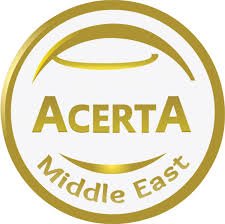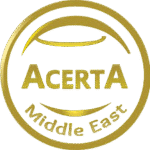In today’s fast-paced industrial landscape, ensuring safety, environmental responsibility, and regulatory compliance is non-negotiable. The Health, Safety, and Environmental Impact Assessment (HSEIA) screening service plays a pivotal role in achieving these goals, particularly in high-risk sectors like oil and gas, petrochemicals, and manufacturing. This article explores the intricacies of HSEIA screening services, their importance, processes, and benefits, with a focus on delivering practical insights for businesses aiming to align with global standards. By prioritizing human safety and environmental stewardship, HSEIA screening ensures projects are sustainable and compliant, fostering trust and operational excellence.
What is HSEIA Screening?
HSEIA screening is a structured process designed to evaluate the potential health, safety, and environmental impacts of industrial projects before they commence. It serves as an initial assessment to identify risks, ensuring that projects adhere to local and international regulations while minimizing harm to people and the environment. Unlike a full Environmental Impact Assessment (EIA), HSEIA screening is a preliminary step, focusing on identifying whether a project requires a detailed assessment or can proceed with standard mitigation measures.
The process integrates health, safety, and environmental considerations into a single framework, making it a comprehensive tool for industries like energy, construction, and refining. By assessing risks early, companies can avoid costly delays, legal issues, or reputational damage. For instance,
Cormat Group, a UK-based engineering consultancy, specializes in providing tailored HSEIA screening services to ensure compliance in complex oil and gas projects.
Why HSEIA Screening is Essential
In industries where operations involve hazardous materials, heavy machinery, or large-scale infrastructure, the stakes are high. A single oversight can lead to accidents, environmental damage, or regulatory penalties. HSEIA screening addresses these challenges by offering a proactive approach to risk management. Here’s why it’s indispensable:
- Regulatory Compliance: Governments and international bodies enforce strict guidelines to protect workers and ecosystems. HSEIA screening ensures projects meet standards set by organizations like the UK’s Health and Safety Executive (HSE) or the Environmental Protection Agency (EPA).
- Risk Identification: Early detection of potential hazards—such as chemical leaks, workplace injuries, or ecological disruptions—allows companies to implement preventive measures before issues escalate.
- Cost Efficiency: Identifying risks during the screening phase reduces the likelihood of expensive rework or fines later in the project lifecycle.
- Reputation Management: Companies that prioritize safety and environmental responsibility build trust with stakeholders, including employees, clients, and communities.
- Sustainability: By addressing environmental impacts early, HSEIA screening supports long-term sustainability goals, aligning with global trends toward greener operations.
For example,
Cormat Group has successfully implemented HSEIA screening for projects like the Ras Tanura Refinery in Saudi Arabia, ensuring compliance with stringent regional regulations while safeguarding operational integrity.
The HSEIA Screening Process
The HSEIA screening process is methodical, combining technical expertise with regulatory knowledge. While the specifics may vary depending on the industry or region, the core steps are consistent. Below is an overview of the process:
1. Project Scoping
The first step involves defining the project’s scope, including its objectives, location, and operational parameters. This helps determine the potential health, safety, and environmental risks. For instance, a refinery project may involve risks like chemical exposure, while an offshore platform might face challenges related to marine ecosystems.
2. Data Collection
This phase gathers relevant data, such as site conditions, materials used, and operational processes. Environmental data (e.g., air quality, water sources) and safety metrics (e.g., equipment standards, worker training) are analyzed to establish a baseline.
3. Risk Identification
Using the collected data, experts identify potential hazards. This includes health risks (e.g., exposure to toxic substances), safety concerns (e.g., equipment failures), and environmental impacts (e.g., emissions or waste). Tools like hazard identification (HAZID) studies or checklists are often employed.
4. Impact Assessment
Each identified risk is evaluated for its likelihood and severity. This step quantifies the potential consequences, such as injury rates, environmental damage, or regulatory violations. Qualitative and quantitative methods, including modeling software, may be used to assess impacts.
5. Mitigation Planning
Once risks are identified and assessed, mitigation strategies are developed. These may include engineering controls (e.g., improved ventilation), procedural changes (e.g., enhanced safety protocols), or environmental safeguards (e.g., waste treatment systems).
6. Reporting and Recommendations
A comprehensive report is prepared, outlining the findings and proposed mitigation measures. This document serves as a roadmap for project managers and regulators, ensuring all risks are addressed before operations begin.
7. Stakeholder Engagement
Engaging with stakeholders—such as local communities, regulatory bodies, and employees—is critical. Their input helps refine the screening process and ensures transparency.
Cormat Group, for instance, integrates stakeholder feedback into its HSEIA screening for projects like the Ruwais Refinery Off-Gases Project, ensuring alignment with client expectations and regulatory requirements.
Key Benefits of HSEIA Screening
Investing in HSEIA screening offers tangible benefits that extend beyond compliance. Here’s how it adds value:
Enhanced Safety Culture
By prioritizing worker safety, HSEIA screening fosters a culture of accountability and care. Employees feel valued, leading to higher morale and productivity.
Environmental Protection
Screening identifies potential ecological risks, such as soil contamination or water pollution, enabling companies to implement safeguards that protect natural resources.
Operational Efficiency
Early risk detection streamlines project execution by reducing unexpected delays or shutdowns. This translates to cost savings and timely project delivery.
Competitive Advantage
Companies that demonstrate a commitment to safety and sustainability stand out in competitive markets. Clients and investors increasingly prioritize partners with strong HSE records.
Legal and Financial Protection
Compliance with regulations minimizes the risk of fines, lawsuits, or project suspensions. HSEIA screening ensures all bases are covered, protecting the company’s bottom line.
Conclusion
HSEIA screening is a cornerstone of responsible industrial operations, ensuring safety, compliance, and sustainability. By identifying risks early, companies can protect their workforce, the environment, and their bottom line. With the right expertise and tools, HSEIA screening becomes a strategic asset, driving operational excellence and stakeholder trust. Whether you’re embarking on a new project or upgrading existing facilities, investing in a robust HSEIA screening service is a step toward a safer, more sustainable future.


